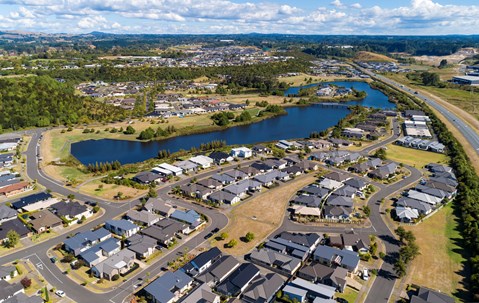News & Tips

Demand For Detached Housing Proves Strong As Pandemic Changes Designs
Demand For Detached Housing Proves Strong As Pandemic Changes Designs
One of the questions heading into 2021 was what the end of HomeBuilder incentive would mean for the market.
Various alternative scenarios were being discussed.
Would demand moderate due to the end of the incentive? Or would demand continue to increase, buoyed by a rebounding economy and greater confidence?
As we approach the end of 2021, the verdict is in.
Although record low interest rates, higher household savings and other factors have played a major role throughout 2021, the second year of COVID-19 has showed that Australia’s appetite for residential property remains strong.
Demand for detached housing, especially, is robust.
The latest Housing Industry Association figures show national new home sales rose 5.8% in August from the previous month.
Moreover, sales in recent months across the nation have continued to remain strong.
This is especially the case when compared to the period before COVID-19.
For example, sales over the past three months have been stronger than the same periods in both 2019 and 2018 (15.4% and 4.5% higher).
Similarly, Oliver Hume data shows new enquires for residential land in Victoria increased by 7% in August and 15% in July (from the previous month).
Stronger demand for detached homes suggests that, for at least some market segments, we could be in the early phase of a structural shift towards lower density dwellings such as detached house and townhouses.
Detached housing is clearly ticking boxes for many buyers because of this product’s capacity to deliver more space to live, work and play – space which has been increasingly sought after over the last year and a half as millions have been subject to lockdowns and other restrictions.
Importantly, in addition to the quest for more space, many design and other features of homes being sought by buyers are changing.
It appears that COVID-19 has resulted in some buyers viewing their homes differently, due to the markedly different economic and health environment, and preferences are also changing.
Although this might appear novel, a quick glance into history suggests this is not a new phenomenon.
Pandemics, infections and related events have long been catalysts for changes in the built environment, architecture and design.
For example, an outbreak of cholera in London led to carpets and drapes in bathrooms being replaced with surfaces that were easier to clean. Today, modern bathrooms now prioritise tiles or marble, creating smooth services which can be cleaned and disinfected.
Similarly, powder rooms or bathrooms for guests are a common feature in modern house designs. However, the origin of this practice dates to the 1918 flu pandemic. Having a small bathroom in the main area meant guests weren’t required to walk through the entire dwelling to wash.
So how are designs changing in the era of COVID-19?
House designs continue to evolve and it is likely that the impact of COVID-19 will continue to be felt for years.
However, even though we are only beginning to see many aspects of house design change, it is clear change is underway.
To date, some of the most distinctive design changes include:
- Home offices: The rise in working from home means a dedicated space for a home office is increasingly highly sought after
- Antimicrobial materials: The priority on health and safety could lead many people to choose easy-to-clean materials and surfaces that are antimicrobial
- Outdoor space emphasis: Integrating outdoor living into new homes are leading to more features like sprawling backyards, balconies and porches where people can play, cook, eat and exercise
- Multi-purpose spaces: More families spending more time at home is creating a need for spaces that can function for different purposes including as recreational space, gym, study or storage
- Open space: People are sending more time at home. Seeking peace and comfort at home and larger living spaces can help them make the most of their leisure time.
Of course, the degree to which these changes in home design are permanent or transitory remains to be seen.
However, the growing recognition that a similar event could occur again in the future, suggests design changes will continue to flow through from the imaginations of architects and designers to the estates and suburbs of our cities and regions.

